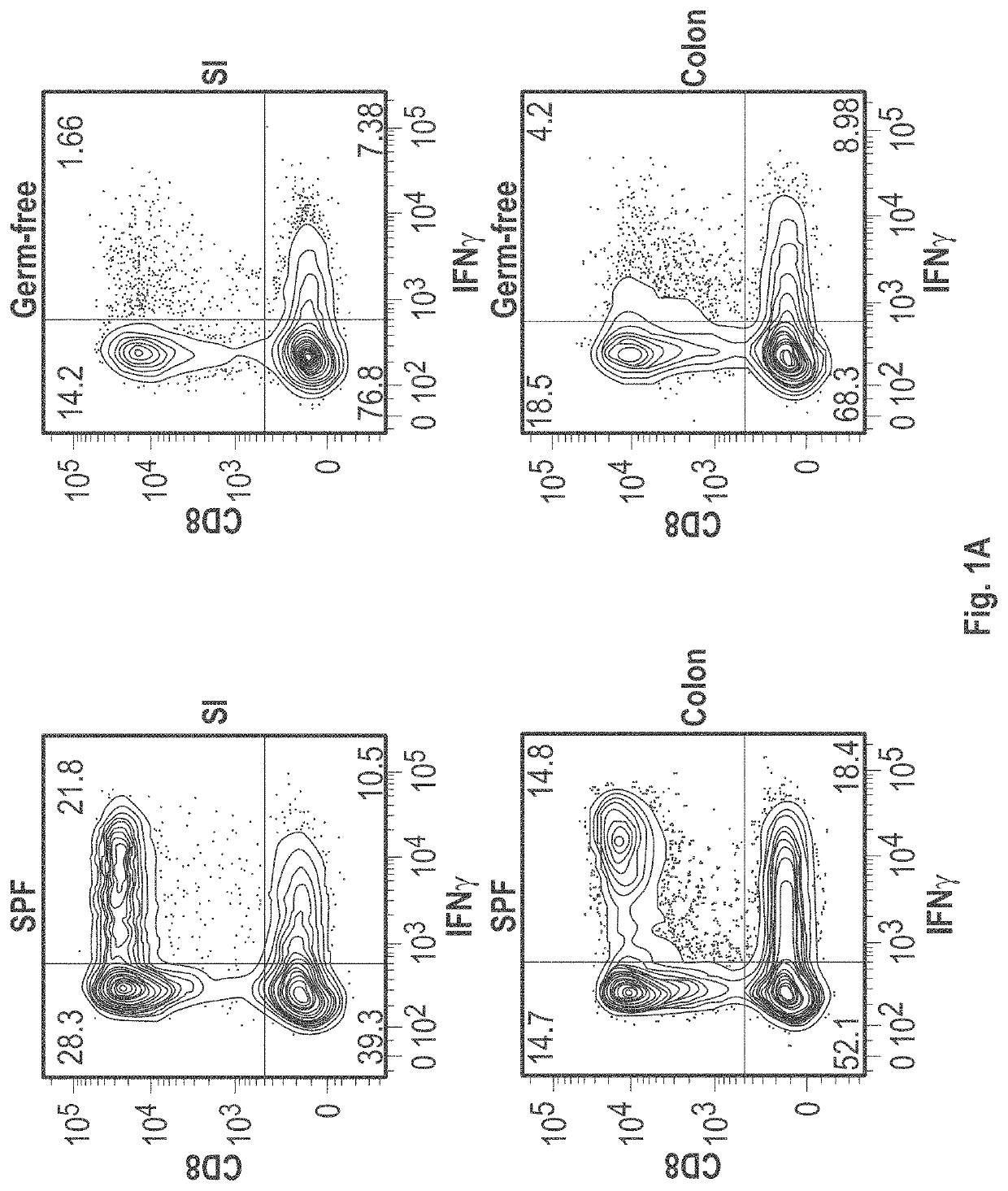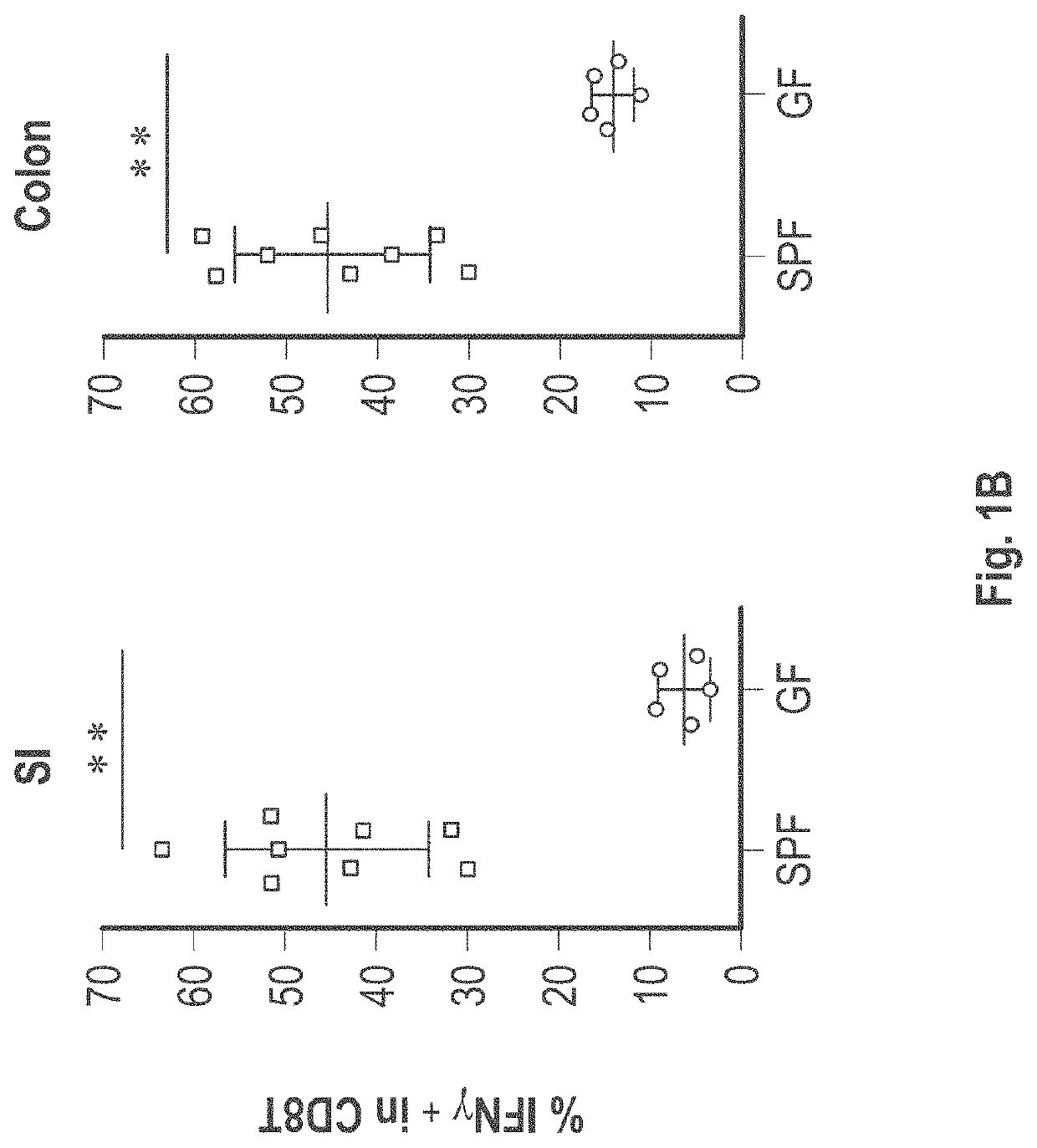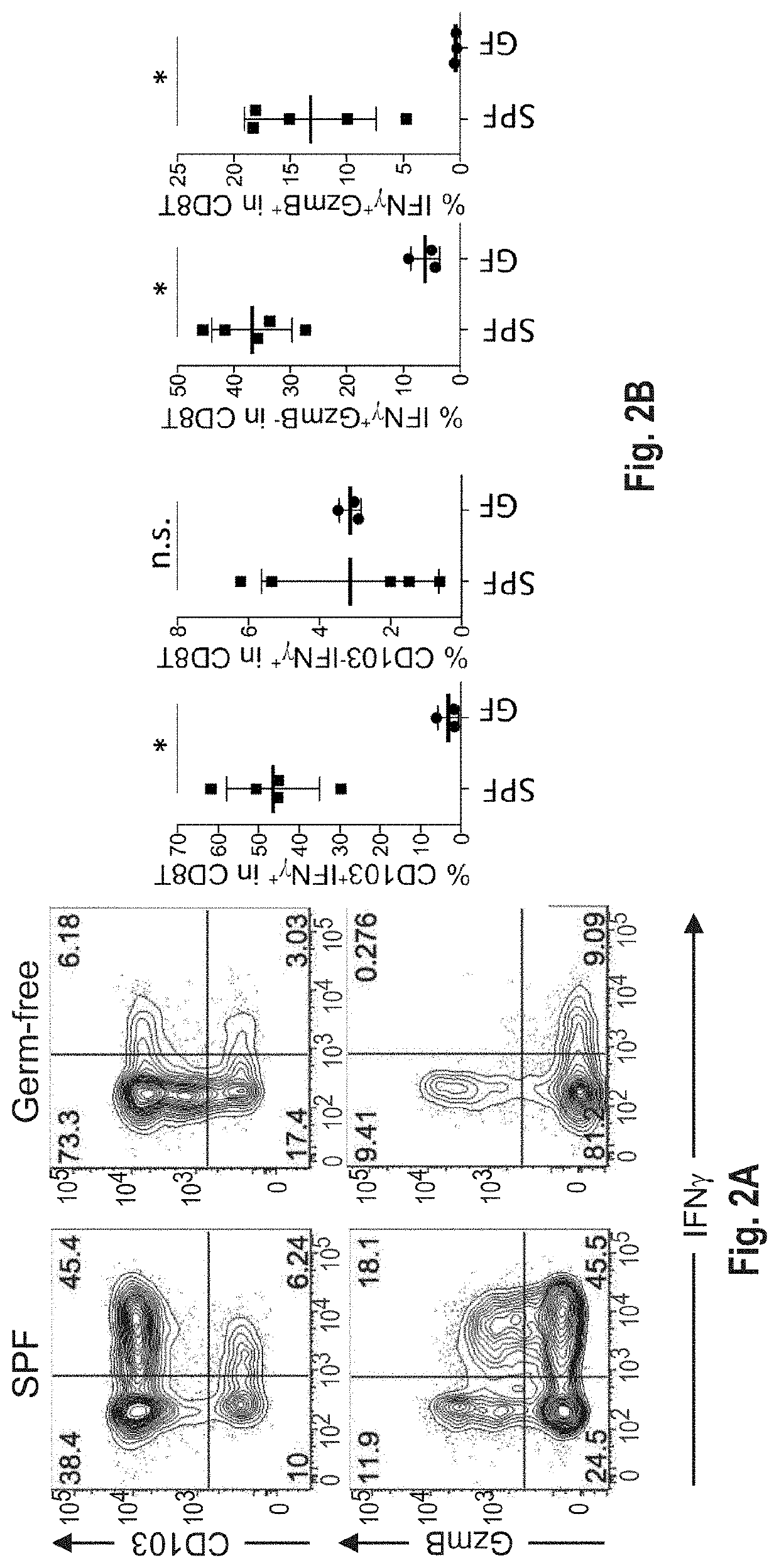Compositions and methods for the induction of cd8+ t-cells
a technology of t-cells and cd8+, which is applied in the field of compositions and methods, can solve the problems of large population subsets (e.g., the elderly) that cannot mount strong immune responses to vaccines, and compromises its ability
- Summary
- Abstract
- Description
- Claims
- Application Information
AI Technical Summary
Benefits of technology
Problems solved by technology
Method used
Image
Examples
example 1
ation of a CD8+ T-Cell Inducing Bacterial Cocktail
[0550]C57BL / 6 mice kept under specific-pathogen free (SPF) conditions which possess resident microbiota have abundant IFNγ+CD8+ T-cells, whereas markedly few IFNγ+CD8+ T-cells were found in intestinal lamina propria of germ free mice (See FIG. 1). This indicates that gut microbiota induces the accumulation of IFNγ+CD8+ T-cells. A subset of IFNγ+CD8+ T cells also expressed CD103 as well as GranzymeB (see FIG. 2A), suggesting that the subset was tissue-resident memory T cells. FIG. 3A shows that remarkably small numbers of IFNγ+CD8+ T-cells were found in SPF C57BL / 6 mice purchased from Charles River Laboratories Inc. and Japan SLC Inc. as compared to SPF C57BL / 6 mice purchased from CLEA Japan Inc. and mice bred in RIKEN. When SPF C57BL / 6 mice from Charles River Laboratories Inc. were co-housed together with CLEA mice in the same cage, an increase of IFNγ+CD8+ T-cells was observed in mice delivered from Charles River Laboratories Inc. (...
example 1a
aracterization of the Mixture of 11 Strains (Composition A)
[0554]The strains of Table 2 were characterized further by resequencing of the 16S sequences and by whole genome sequencing. The results of the further characterization are found in Table 3.
TABLE 3[Further characterization of the 11-mix (the mixture of 11 strains)]SEQspecies with highestNCBIspecies with highestIDStrainhomology based onaccessionhomology based onStrain #NOIDoriginal 16S analysisID16S resequencing221A6FusobacteriumK0052822463Fusobacterium772F11ParabacteroidesNR041464Parabacteroides662A6ParaprevotellaNR113078Paraprevotellaxylaniphilaxylaniphila11112G9ParabacteroidesNR041342Parabacteroides881E7Alistipes sp.LT223566Alistipes10101C1EubacteriumNR113248Eubacterium331B11Bacteroides doreiCP011531Bacteroides dorei991H9ParabacteroidesNR112835Parabacteroides552B1SubdolinogranulumKM098109Gemmingersp.formicilis442G1BacteroidesNR112945Bacteroides112G5PhascolarctobacteriumLN998073Phascolarctobacterium16Sspecies with highestAl...
example 2
haracterization of a CD8+ T-Cell Inducing Bacterial Cocktail
[0555]Twenty six strains isolated from cecal contents of B#5+AMP mice that exhibited high frequencies of IFNγ+CD8+ T cells are shown in FIG. 11. Among the 26 strains, 11 strains (“11 mix”) were positively correlated with the frequency of IFNγ+CD8+ T cells. Therefore, these 11 strains were selected for further experiments, and the mixture of 11 strains (“11-mix”) was inoculated into germ-free mice (see also Table 2). Colonization with the 11-mix resulted in a strong induction of colonic IFNγ+CD8+ T cells (FIGS. 10A, 10B, 12A, and 12B), whereas the other 10 strains (“10-mix”) weakly induced IFNγ+CD8+ T cells compared to the levels induced by the 11-mix (FIGS. 12A and 12B). Mice inoculated with a mixture of 17 Treg-inducing bacterial strains (See e.g., WO2013 / 080561; Atarashi et al., Nature (2013) 500 (7461): 232-236; Narushima et al. Gut Microbes (2014)5(3): 333-339) did not accumulate IFNγ+CD8+ T cells (FIGS. 12A and 12B).
[0...
PUM
| Property | Measurement | Unit |
|---|---|---|
| transit time | aaaaa | aaaaa |
| volume | aaaaa | aaaaa |
| volume | aaaaa | aaaaa |
Abstract
Description
Claims
Application Information
 Login to View More
Login to View More - R&D
- Intellectual Property
- Life Sciences
- Materials
- Tech Scout
- Unparalleled Data Quality
- Higher Quality Content
- 60% Fewer Hallucinations
Browse by: Latest US Patents, China's latest patents, Technical Efficacy Thesaurus, Application Domain, Technology Topic, Popular Technical Reports.
© 2025 PatSnap. All rights reserved.Legal|Privacy policy|Modern Slavery Act Transparency Statement|Sitemap|About US| Contact US: help@patsnap.com



